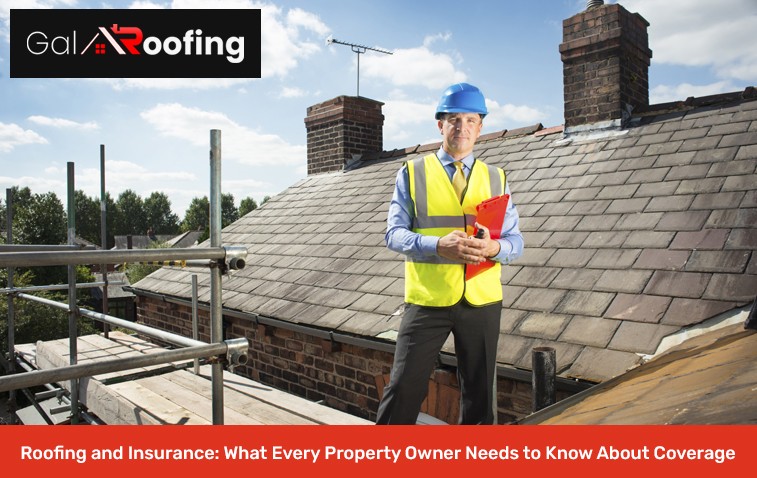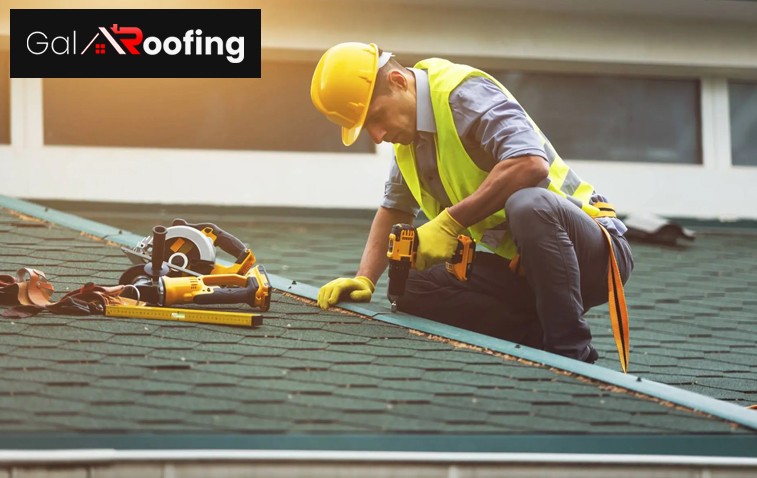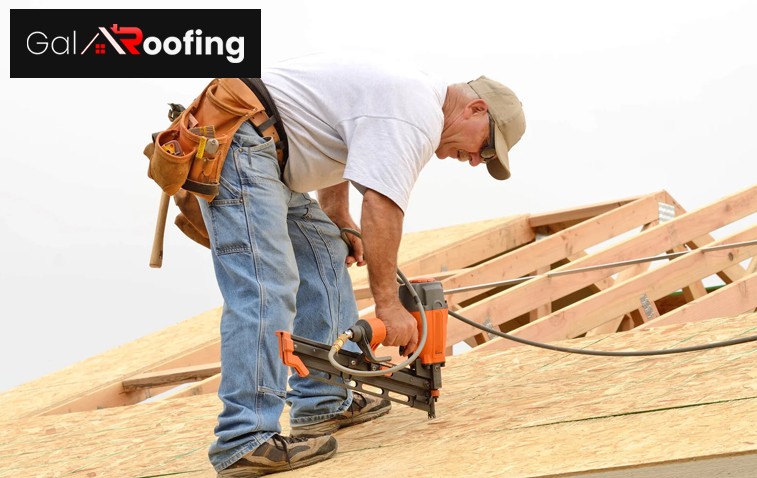Roofing and Insurance: What Every Property Owner Needs to Know About Coverage
The roof is one of the most critical components of any property, providing essential protection against the elements. However, it’s also one of the most vulnerable parts of a building, often exposed to the harshest weather conditions. From heavy rain and snow to hail and windstorms, a roof can endure significant wear and tear over time. As a property owner, understanding the relationship between your roofing and insurance coverage is crucial.
Not only does it ensure that you’re adequately protected in the event of damage, but it also helps you navigate the often complex claims process with confidence. Whether you’re dealing with a minor leak or major storm damage, knowing what your insurance policy covers and what it doesn’t can make all the difference in safeguarding your investment. This comprehensive guide will help you understand the key aspects of roofing insurance, from common coverage scenarios to tips on maintaining your roof to prevent potential issues.

1. Understanding Roofing Insurance Coverage
Roofing insurance coverage is a vital part of homeowners’ insurance, designed to protect you from the financial burden of repairing or replacing your roof due to damage caused by various risks. However, the extent of coverage can vary significantly depending on your policy and the specific circumstances of the damage.
What’s Typically Covered?
Most standard homeowners’ insurance policies cover roof damage caused by “perils” or risks such as fire, wind, hail, and other weather-related events. However, the specifics of this coverage can vary.
Key Points:
- Weather Damage: Roof damage caused by events like windstorms, hail, and snow is generally covered by homeowners’ insurance. This includes both repair and replacement costs, depending on the extent of the damage.
- Fire Damage: If your roof is damaged or destroyed by fire, your insurance policy typically covers the cost of repairs or a full roof replacement.
- Falling Objects: Damage caused by falling objects, such as trees or branches, is also usually covered, provided the damage was sudden and accidental.
What’s Not Covered?
While many types of roof damage are covered by insurance, there are certain situations where coverage may be denied.
Key Points:
- Wear and Tear: Insurance typically doesn’t cover roof damage that results from normal wear and tear, aging, or lack of maintenance. It’s considered the homeowner’s responsibility to maintain the roof and prevent deterioration.
- Neglect: If an insurer determines that the damage was due to neglect or poor maintenance, the claim may be denied. Regular inspections and maintenance are essential to ensure that your roof remains in good condition.
- Exclusions: Some policies have specific exclusions for certain types of damage, such as damage caused by earthquakes or floods, which may require additional coverage.
2. Roof Age and Insurance Implications
The age of your roof can significantly impact your insurance coverage, premiums, and even your ability to get a policy. Older roofs are more susceptible to damage and may require more frequent repairs, making them a higher risk for insurers.
How Roof Age Affects Coverage
As roofs age, they become less effective at protecting the home, which can influence the type and amount of coverage available.
Key Points:
- Full Replacement vs. Actual Cash Value: Many insurance policies offer full replacement coverage for newer roofs but may only offer actual cash value coverage for older roofs. This means the payout will be based on the depreciated value of the roof, not the cost of replacing it with a new one.
- Premiums: Homes with older roofs may have higher insurance premiums due to the increased risk of damage. Insurers may also require a roof inspection before issuing or renewing a policy on an older home.
- Policy Renewal: If your roof is particularly old and in poor condition, some insurers may refuse to renew your policy until the roof is repaired or replaced.
Maintaining an Older Roof
Proper maintenance of an older roof is crucial to maintaining your insurance coverage and ensuring your home remains protected.
Key Points:
- Regular Inspections: Schedule regular roof inspections to catch potential issues early and prevent minor problems from becoming major ones.
- Timely Repairs: Address any repairs promptly to prevent further damage and to demonstrate to your insurer that you are maintaining the roof properly.
- Consider Upgrading: If your roof is nearing the end of its useful life, consider upgrading to a new roof. This can not only improve your home’s protection but also potentially lower your insurance premiums.

3. Filing a Roof Insurance Claim
Filing an insurance claim for roof damage can be a complex process, but understanding the steps involved can help ensure a smooth experience. It’s important to act quickly and follow your insurer’s procedures closely to maximize your chances of a successful claim.
Steps to File a Claim
When your roof sustains damage, it’s essential to act quickly to mitigate further harm and begin the claims process.
Key Points:
- Document the Damage: As soon as it’s safe to do so, document the damage by taking photos and videos. This evidence will be crucial when filing your claim.
- Contact Your Insurance Company: Notify your insurer as soon as possible. Provide them with the documentation and details of the damage. Be prepared to answer questions about the age of the roof and any previous repairs.
- Temporary Repairs: If the damage is significant, you may need to make temporary repairs to prevent further damage, such as covering holes with a tarp. Keep all receipts for materials and labor, as these expenses may be reimbursed by your insurance.
- Inspection: Your insurance company will likely send an adjuster to inspect the damage and assess the cost of repairs or replacement. Be present during the inspection to answer any questions and provide additional information.
- Review the Estimate: Once the adjuster has completed the inspection, you will receive an estimate for the cost of repairs or replacement. Review this estimate carefully and discuss any discrepancies with your insurer.
Common Pitfalls to Avoid
There are several common pitfalls that homeowners should avoid when filing a roof insurance claim to ensure the best possible outcome.
Key Points:
- Delaying the Claim: Don’t delay in reporting the damage. Waiting too long can result in further damage and may weaken your claim.
- Incomplete Documentation: Make sure you thoroughly document the damage, including the date and time of the incident, to provide a clear record to your insurer.
- Choosing Contractors: Be cautious when selecting a contractor for repairs. Avoid working with contractors who promise to handle the insurance claim for you, as this can lead to conflicts of interest.
4. Preventative Measures and Maintenance
Preventing roof damage and maintaining your roof are key to ensuring your insurance coverage remains intact and minimizing the need for claims. Consistent upkeep helps prolong your roof’s lifespan and lowers the chances of expensive repairs or replacements.
Regular Roof Inspections
Regular roof inspections are essential for identifying potential issues before they become major problems.
Key Points:
- Professional Inspections: Hire a professional to inspect your roof at least once a year, especially before and after severe weather seasons. They can identify issues like loose shingles, leaks, and structural weaknesses that may not be visible to the untrained eye.
- Self-Inspections: In addition to professional inspections, conduct regular self-inspections. Look for signs of damage such as missing or cracked shingles, water stains on the ceiling, or debris buildup in gutters.
Maintenance Tips
Regular maintenance can help you avoid many common roofing problems and keep your insurance premiums in check.
Key Points:
- Clean Gutters: Keep your gutters clean and free of debris to prevent water from backing up and causing damage to your roof and home’s foundation.
- Trim Trees: Trim overhanging tree branches to prevent them from falling on your roof during storms or heavy winds.
- Address Minor Repairs: Don’t ignore minor repairs. Fixing small issues like loose shingles or leaks as soon as they arise can prevent more significant damage and costly repairs in the future.
Roof Upgrades and Improvements
Consider upgrading your roof to enhance its durability and potentially lower your insurance premiums.
Key Points:
- Impact-Resistant Shingles: Consider installing impact-resistant shingles, especially if you live in an area prone to hailstorms. These shingles are more durable and may qualify you for insurance discounts.
- Cool Roof Coatings: Applying a cool roof coating can reflect more sunlight and reduce heat absorption, which can help lower energy costs and extend the life of your roof.
- Reinforcement: Strengthen your roof with additional reinforcements, such as hurricane straps or additional underlayment, to protect against severe weather and potentially lower insurance costs.
5. The Role of Weather in Roofing Insurance Claims
Weather is one of the most common causes of roof damage, and understanding how your insurance policy responds to different weather events is crucial for property owners.
Common Weather-Related Claims
Certain weather events are more likely to result in roof damage and subsequent insurance claims.
Key Points:
- Hailstorms: Hail can cause significant damage to roofing materials, particularly asphalt shingles, by creating dents and cracks that can lead to leaks.
- Windstorms: High winds can lift and tear off shingles, leaving the roof vulnerable to water damage. Windstorms are one of the most common causes of roof damage claims.
- Snow and Ice: Heavy snow and ice can put excessive weight on your roof, leading to structural damage. Ice dams, which form when melting snow refreezes at the roof’s edge, can cause water to back up under the shingles, resulting in leaks.
Preparing for Severe Weather
Taking proactive steps to prepare your roof for severe weather can help minimize damage and make the claims process smoother.
Key Points:
- Reinforcement: Before severe weather hits, reinforce vulnerable areas of your roof, such as the edges and corners, to prevent wind and water damage.
- Clear Debris: Remove debris, such as leaves and branches, from your roof and gutters to prevent blockages that could exacerbate water damage.
- Emergency Supplies: Keep emergency roof repair supplies, like tarps and roofing nails, on hand to make temporary repairs if needed after a storm.

6. Navigating Insurance Adjustments and Disputes
Sometimes, the insurance claims process doesn’t go as smoothly as expected, and disputes can arise between the homeowner and the insurance company. Understanding how to navigate these situations can help ensure that you receive the coverage you’re entitled to.
Working with an Insurance Adjuster
The insurance adjuster plays a crucial role in determining the outcome of your roof damage claim.
Key Points:
- Be Present: Be present during the adjuster’s inspection to answer questions and point out all areas of damage. This ensures that nothing is overlooked.
- Ask Questions: Don’t hesitate to ask the adjuster questions about their findings and the process. Understanding how they arrived at their assessment can help you prepare for the next steps.
- Get a Second Opinion: If you’re not satisfied with the adjuster’s assessment, consider getting a second opinion from a licensed roofing contractor. They can provide an independent evaluation of the damage.
Disputes and Appeals
If you disagree with your insurer’s decision, you have the right to dispute the claim or appeal the decision.
Key Points:
- Review Your Policy: Carefully review your insurance policy to understand the coverage limits and any clauses that might affect your claim.
- Document Everything: Keep detailed records of all communications with your insurance company, including phone calls, emails, and letters.
- Consider Mediation or Arbitration: If you can’t reach an agreement with your insurer, you may consider mediation or arbitration as an alternative to legal action. These processes can help resolve disputes without the need for a lengthy court battle.
Conclusion
Roofing and insurance are closely linked, so understanding their relationship is essential to protect your property and ensure you have adequate coverage in case of damage. By familiarizing yourself with your insurance policy, maintaining your roof, and knowing how to navigate the claims process, you can safeguard your investment and avoid costly surprises. Whether you’re dealing with an older roof, preparing for severe weather, or filing a claim, being informed and proactive can make all the difference in maintaining your home’s integrity and value.